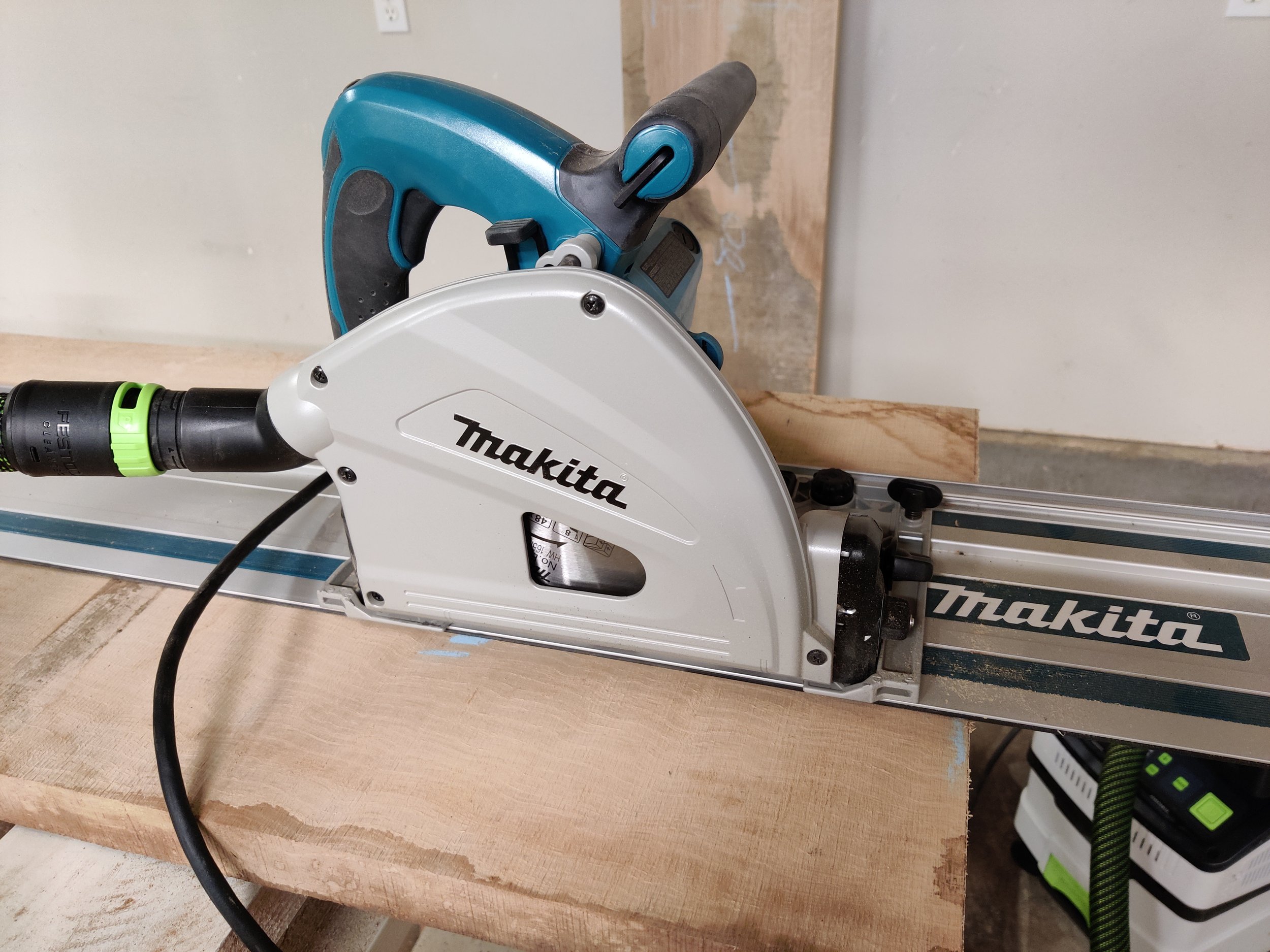Do You Need a Track Saw?
If you are like me, you don’t want to invest in a tool you know you don’t need. I had a circular saw and I used it for years to break down plywood. I would lay out scrap 2x4s on the ground, put my plywood on top, mark where I want to cut, use my 4 foot level as a straight edge (or if it wasn’t long enough, grab the longest, straightest piece of wood I could find), figure out my offset on my circular saw, layout my straight edge, clamp it down, and cut. It’s a long process, but it works.
I don’t like all that setup time though. I don’t have a ton of time to spend in the shop and spending it all just to break plywood down is a waste of my time. So I took the plunge and bought a track saw. I was able to justify it because I had an upcoming project where I was going to need to break down some plywood and I figured it would be a good investment to speed things up.
I went with the Makita corded saw. It had great reviews and was a good price. I decided to go corded because I figured 99% of the time I’ll be using it in my shop, therefore I’ll have power. Plus I’ll want to connect a vacuum to it anyway so if I have to drag a hose around I might as well drag the cord with it.
The saw came and I was ready to go, then the project fell through. I put the saw back in it’s sustainer (or whatever Makita calls their plastic tool boxes) where it sat for months. I used it a couple of times when I needed to flush up the end of a wide panel, but that was it.
Then, I had a project with some big pieces of white oak. And that’s where this saw shined.
First of all, I don’t have a jointer. I used to but it was a small thing and more headache than help, so I got rid of it about a year ago and replaced it with my DeWalt planer, which has been awesome, I highly recommend it.
How I typically joint boards to create a straight edge for glue ups is by using my old Stanley #5. It works fine, especially on smaller boards, but when I’m trying to plane a perfect edge on an 80 inch board, that becomes a lot of work. Plus I would have to do it 6 times. Then try to run each of those through my little jobsite table saw terrified me.
So I broke out my track saw. I only had a 55 inch track so I bought a second track with a connector kit so I had a total cutting capacity of 110 inches. Let me tell you, this thing worked wonders. I setup my first cut by laying out the track to take as small of a pass off of one side as I could to create a straight edge in the board, then I cut. That was it. Simple, easy, and it was perfect on the first go. I was sold. There was no fighting or struggling to heft this big board through my jobsite saw. I didn’t have to spend 10 minutes laying out a straight edge and double checking it. It was a revelation.
And if that wasn’t enough, I’d estimate that 90% of the sawdust was sucked up my the attached vacuum. My old method was vacuum-less and sprayed sawdust everywhere. When I cut off the ends of the boards with my skill saw the other day I ended up with two dustpans full when I swept up. And those were just cross cuts. After all of my rips I ended up with less than a dustpan full.
For perspective, the cross cuts equated to a total of 204 inches of cutting for all 6 boards. That’s 2 cuts per board, each board being roughly 17 inches across. I ripped the same 6 boards, but each rip was 80 inches long and I made 2 cuts per board equaling 960 inches of cutting. That’s 4.7 times the amount of sawdust I made, but it all went straight into the vacuum instead of in the air and on the floor.
To answer the question, do you need a track saw? My answer is, it depends. Do you want to be more efficient with your time? Would you benefit from increased accuracy over a circular saw? Do you have the space to store another saw plus the tracks? Do you have the budget to spend on a track saw? Mine wasn’t cheap, between the saw, two tracks, and connector, I spent nearly $550. If you answered yes to those questions, then get a track saw. It’ll help you out so much.
If not, there are alternatives to accomplish the same task. I do recommend saving up and getting a track saw when you can.
Here’s what I purchased and recommend.
Makita SP6000J1 6-1/2" Plunge Circular Saw (Corded) with 55" Guide Rail - https://amzn.to/3bDh2Cs
Makita 55” Track and Guide Rail Connector Kit - https://amzn.to/3ntrCPo
And if you’re wondering, these are affiliate links. If you are interested in this track saw, please purchase through these links to support me and my blog.




